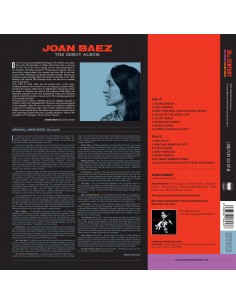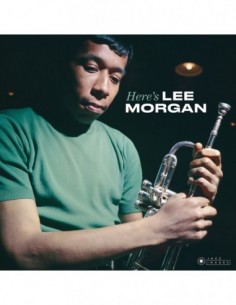Classic 1956 Sessions W/ John Coltrane
Miles DavisTHE FRANCIS WOLFF COLLECTION
2-CD SET
4-PANEL DIGIPACK
INCLUDES 16-PAGE BOOKLET
Miles Davis’ association with John Coltrane between 1955 and 1961 produced some of the most wonderful recordings in jazz history. This set compiles all of the quintet recordings made during two marathon studio sessions on May 11 and October 26, 1956. Those amazing dates produced the music released on the classic albums Cookin’ (Prestige PRLP 7094), Relaxin’ (Prestige PRLP 7129), Workin’ (Prestige PRLP 7166), and Steamin’ (Prestige PRLP 7200), which ended the trumpeter’s contract with Prestige Records.
PERSONNEL:
MILES DAVIS, trumpet
JOHN COLTRANE, tenor sax
RED GARLAND, piano
PAUL CHAMBERS, bass
PHILLY JOE JONES, drums
Hackensack, New Jersey, May 11 (CD1) & October 26 (CD2), 1956.
CD 1: TOTAL TIME 75:55 Min.
01 In Your Own Sweet Way
02 Diane
03 Trane’s Blues
04 Something I Dreamed Last Night
05 It Could Happen to You
06 W oody ‘n You
07 The Theme (Long)
08 Surrey With the Fringe on Top
09 It Never Entered My Mind
10 W hen I Fall in Love
11 Salt Peanuts
12 Four
13 The Theme (Short)
CD 2: TOTAL TIME 74:40 Min.
01 If I Were a Bell
02 Well You Needn’t
03 ‘Round Midnight
04 H alf Nelson
05 You’re My Everything
06 I Could Write a Book
07 Oleo
08 Airegin
09 Tune Up
10 W hen Lights Are Low
11 Blues by Five
12 My Funny Valentine
One of the most renowned jazz photographers of all time, Francis Wolff (1907-1971) was also a record company executive and producer, whose skills were essential to the success of the Blue Note record label. Born Jakob Franz Wolff in Berlin, Germany, he soon became a jazz enthusiast, despite the government ban placed on this type of music after 1933. A Jew, in 1939 he left Berlin, where he had worked as a commercial photographer, and established himself in New York. He began working there with his childhood friend Alfred Lion, who had co-founded Blue Note Records with Max Margulis. The latter soon dropped out of any involvement in the company, and Wolff joined Lion in running it. Wolff took thousands of photographs during the label’s recording sessions and rehearsals. His highly personal visual concept would be forever associated with both Blue Note and jazz as a whole.
- Format
- CD
- Discs
- 2
- Label code
- 38107
 Cookie preferences
Cookie preferences





























































